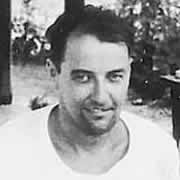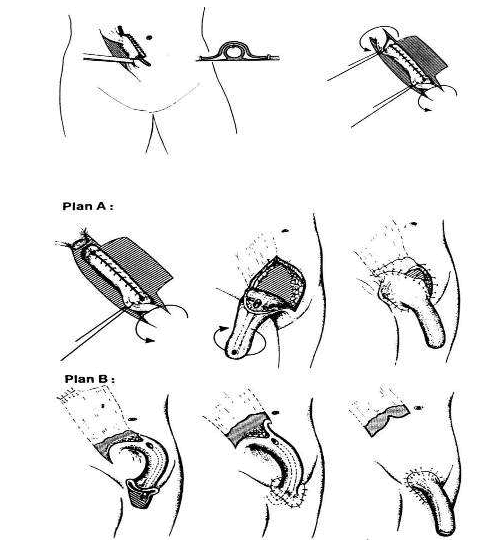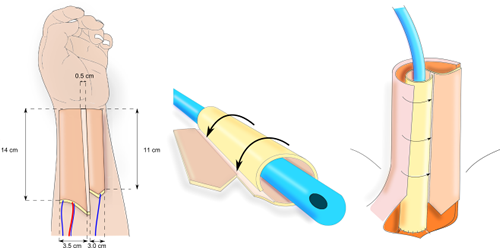The First FTM Phalloplasty Revisited
New Story Suggests First FTM Transition Was Completed in the Former Soviet Union
The person most widely believed to be the first to successfully undergo female-to-male sex reassignment surgery is Michael Dillon. Dillon was reportedly the first to use testosterone therapy for the purpose of FTM transition and to have both Top Surgery and Phalloplasty, performed in the late 1940s. However, a new story has emerged that claims that the first complete FTM transition actually took place in the former Soviet Union more than 20 years later.
As a surgical technique, FTM Phalloplasty has come a long way since it was first performed in the '40s. What must it have been like for that first patient to undergo surgery, without any peer support, Facebook groups or academic studies to quell fears and uncertainty? Without a doubt, he must have been determined and courageous. So, who was he?
 Laurence Michael Dillon (May 1, 1915 – May 15, 1962) was a British physician who despite being born female-bodied sincerely felt that he was a man. In 1939, he sought treatment with Dr. George Foss, who provided Dillon with oral testosterone tablets. While in the hospital for a head injury, Dillon connected with a plastic surgeon, a rare specialty at the time, who performed a double mastectomy for him. (It's likely that Dillon was also the first Top Surgery patient.) This surgeon put him in touch with Dr. Harold Gillies, who performed Phalloplasty for injured soldiers. In 1946, Gillies agreed to perform Phalloplasty for Dillon, and from 1946 to 1949 Gillies performed at least 13 surgeries on Dillon. This method of Phalloplasty became known as the Gillies Technique:
Laurence Michael Dillon (May 1, 1915 – May 15, 1962) was a British physician who despite being born female-bodied sincerely felt that he was a man. In 1939, he sought treatment with Dr. George Foss, who provided Dillon with oral testosterone tablets. While in the hospital for a head injury, Dillon connected with a plastic surgeon, a rare specialty at the time, who performed a double mastectomy for him. (It's likely that Dillon was also the first Top Surgery patient.) This surgeon put him in touch with Dr. Harold Gillies, who performed Phalloplasty for injured soldiers. In 1946, Gillies agreed to perform Phalloplasty for Dillon, and from 1946 to 1949 Gillies performed at least 13 surgeries on Dillon. This method of Phalloplasty became known as the Gillies Technique:
"The five stage procedure began by Gillies rolling a tube of tissue on the abdominal wall to produce a urethra. He surrounded this with another tube pedicle thereby, producing a composite homogenous penis. The upper end of the tube pedicle was then divided, and the new urethra anastamosed to the natural urethral aperture. The base of flap was adjusted and excess tissue discarded. The end of tube was then modelled to resemble the glans penis and the distal half of the penis thinned. This technique laid the foundation on which modern phalloplasty is based. Subsequently, Gillies went onto performed a flap technique female to male reassignment procedure, a method that has remained standard for forty years."
Source: Sir Harold Gillies: Pioneer Of Phalloplasty and the Birth of Uroplastic Surgery

Source: Phalloplasty [pdf]
Origins of Phalloplasty
While Gilllies was the first to use the procedure for a transsexual patient, his method has its roots in an earlier type of Phalloplasty developed by Dr. Bogoraz (sometimes spelled "Bogoras") who performed the first phalloplasty in 1936. Bogoraz' bipedicled abdominal tubed flap Phalloplasty was based on the use of a single abdominal tube and was a multi-stage technique requiring secondary construction of the neo-urethra. The technique was improved on by Dr. McIndoe and Dr. Maltz before Dr. Gillies popularized it.
This type of Abdominal Phalloplasty was the standard for many years before the first pedicled and free flap Phalloplasty techniques emerged in the '70s and early '80s. Abdominal Phalloplasty is still performed today by surgeons in the UK and the US. Radial Forearm Flap Phalloplasty also has its roots in the Gillies Technique: the "tube within a tube" approach was incorporated into the Chang-design and Gottlieb-design RFF Phalloplasty methods in the '80s.

Source: Second free radial forearm flap for urethral reconstruction after partial flap necrosis
At the Vanguard of FTM Surgery in the Former Soviet Union
While Dillon has been the person most widely believed to be the first to successfully undergo female-to-male sex reassignment, a new Buzzfeed story puts forth evidence that suggests that Dillon's transition was not "complete" and that the first complete FTM sex reassignment actually took place in the former Soviet Union in the early '70s. The story does not provide details of the surgical techniques, but indicates that a "complete" transition includes Hysterectomy and that Dillon did not undergo this surgery.
Excerpt from The Trans Man Whose Pioneering Surgery Was A State Secret For Decades
RIGA, Latvia — Dr. Viktors Kalnberzs still remembers the day in the winter of 1968 when the phone in his office rang and changed his life forever. On the other end of the line was his friend Vladimir Demikhov, a pioneering transplantology surgeon, who told him about a potential patient named Inna who wanted "to become a man." Demikhov wondered if Kalnberzs would be interested in taking on the patient. Kalnberzs would risk the anger of Soviet authorities and being shunned by the medical community to carry out an unprecedented surgery that remained a state secret for decades.
More than 40 years later, BuzzFeed News and Russian website Meduza tracked down Kalnberzs, now in his nineties, to a sleepy suburb of Riga, the Latvian capital, where he spoke for the first time at great length about the world's first full female-to-male gender affirmation surgery.
"I know you're going to try to talk me out of it, but don't bother," Kalnberzs recalled Inna telling him. "I am convinced that nature has made a mistake and that you can fix it."
After this initial meeting, Kalnberzs began researching, but there wasn't much information available. All he could find was scientific literature regarding just four transition operations from female to male. But not one of the operations had been fully completed — the old sexual organs had been left intact, still functioning, alongside the new sexual organs created by the surgeons. The patients could get pregnant and they still menstruated.
After reading all the literature, Kalnberzs made a momentous decision: If he were going to carry out the surgery, he needed to do it fully, and to the end.
Kalnberzs operated on Inna nine times. The entire process took over a year and a half. The first operation was performed on Sept. 17, 1970, and the last was completed on April 5, 1972. After the final surgery, they began calling Inna "Innokenty" — the name stuck at the hospital, but the patient chose another, secret name after leaving. In parting, Innokenty gave the doctor a note, dated Aug. 14, 1972:
"Finally, after so many years, the duality that was oppressing me is gone. In my new form, I can be among people as my legitimate self. I feel that I have the strength to catch up on everything I missed in my previous life."
Innokenty said he had quit his job at the research and development institute and decided to end his career in engineering, believing the KGB would be interested in his past. He'd tell doctors that his scars were from a fight. "A surgeon never figured out that his penis was artificially constructed. At that time, it wouldn't occur to anyone to think that sex change operations were being performed in our country," said Kalnberzs.
Regardless of who underwent the first "complete" transition, it's clear that these pioneers were determined and courageous, and our generation owes them a debt of gratitude for paving the way for the emergence of modern Phalloplasty techniques.
Last updated: 10/10/19